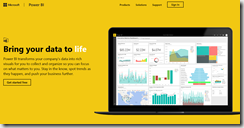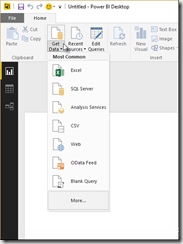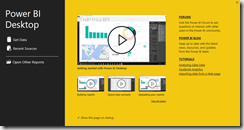SCCM Community meet Power BI – Power BI meet the SCCM Community…
This blog post is the part 1 of 2 blog posts – and as you can see it’s all about introductions.
Power BI is not a “new” thing, it’s been around for some time but is really just now starting to take off.

(https://powerbi.microsoft.com/en-us/)
So what is Power BI?
It’s a new online service for us to get insight of our SCCM data, and for us to further display data internally or to others. Previous versions was a coop between Power BI and Office 365, but now we have Power BI as an online service by itself. It even comes in a Desktop version that allows you to connect and build data sources locally from your device.
How can it help me working with SCCM?
A big wish from many administrators is an simple and understandable way to show the work and effort we put into acquiring the data that we gather in SCCM. They are constantly asked to provide visual evidence for services provided and time spent.
Whether it’s Inventory, Health, Compliance or Deployment data we have had some possibilities to do just that with built-in reporting tools, but in my opinion its been heavy, slow and tiresome to work with. Can Power BI replace all that? No not quite, because there are still dashboard solutions out there that might be more fitting to the individual needs. But if you asked me if I would spend time building Reports in SCCM with the report builder or visual studio? I’d answer no – there’s Power BI!
And how does it work?
If you have worked with SQL Reporting Service for SCCM or perhaps even Power Query for Excel (Now built-in with Office 2016) then you know the dataset’s to be the foundation of these. It’s still the same, and we can even reuse the exact same queries in order work with the same data, but in a way that brings us many more options in terms of visual creativity and dynamics.

(Check this page out for all the possible data sources https://powerbi.microsoft.com/en-us/documentation/powerbi-desktop-data-sources/)
The way that we connect to the data are numerous, but it goes with out saying that the direct SQL connections is what the most would look into, we just need a way to access it with account rights etc.
So to end this part 1, I hope that I’ve planted a seed of interest and perhaps you will even have looked at Power BI before you get the chance to read part 2 that will come later, with en example and a template for you all to use as a startingline for racing forwards into the Power BI world.
So stay tuned to our xmas blog calendar, still so much cool stuff for us to share with you all.
Merry xmas!




Good article .Good luck